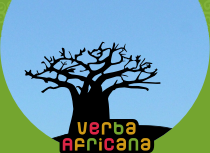Kunguiya and Kilua
Kunguiya
This is one of the ngoma performed during the female initiation ceremony, Unyago ya kuvina. This ceremony takes place when girls reach puberty but have not yet married and it consists of all the teachings referred to physiological change of a woman, to the habits and the cares referring to personal hygiene and to life within the community she belongs to.
The ritual is complex in its structure: traditionally it lasts for three months (nowadays it depends on the financial means of the family to which the girl belongs) during which mwari (the girl who has to be initiated) is secluded in an isolated place, not easily accessible, but within the community; this prerogative highlights the social importance of this event, of which the community must be informed and in which, although indirectly, it must participate. The initiation involves a fundamental change in the social status of the woman to be initiated: the separation from the mother with whom it is not possible to get in touch during the ritual.
This specific ngoma is hardly ever danced nowadays, but it is still performed in schools on occasion of the Mashindano ya skuli — Schools competition: this is the only setting where, since 1964, at the Elimu bila Malipo, free education ceremony, the competition tradition has been kept alive.1
It is interesting to note that, while the steps and the mime of the dancers, who act like wari (plur. of mwari), are always identical to those used during the rituals, the text of the song has been radically changed, following the ngoma characteristic to be a useful means to spread out social, political or religious aims, depending on the context.
The rythm, the music, the dance and the costumes are reminiscent of ancient traditions, but the text speaks about the current ceremony, which celebrates 40 years of free education: tunafurahia elimu yetu, miaka arobaini bila malipo. Another topic is the worst disease: Aids. This topic is usually discussed at school to promote prevention: sote tujihadhiri kwa gonjwa la ukimwi...
Kilua
This ngoma has been chosen because it is representative of one important aspect in the study of this cultural performance: to understand where a ngoma comes from, or to which tribe it belongs has become more and more difficult and probably impossible. People coming from different cultural heritages met and intermixed during the centuries, so that some rituals or cultural events were borrowed and, eventually, considered as part of their own culture. On the one side, these borrowings enriched the various cultures and diluted their identity. On the other side, since ngoma performances have a ‘social commentary’ function, they represent one of the clearest demonstrations of the Swahili communities’ skills in responding to historical and political change.
“Swahili are well known for absorbing new-comers, socializing them into Swahili life, refining their tastes to Swahili ideals and values — in short, transforming them into Swahili at the same time that the Swahili themselves adopt and adapt whatever of the contact culture that strikes their fancy, whether it be Indian music, Arab clothes, or European furniture styles.”2
A case in point is Kilua, which is native to the Wamanyema land, but is normally considered a ngoma ya mjini (a ngoma native to Zanzibar town) by performers coming from Zanzibar. Cultural performance is something that can change at any time; this fact does not jeopardize the value or the authenticity of the performance itself, but underlines the importance of considering the context of the performance in any analysis related to it.

